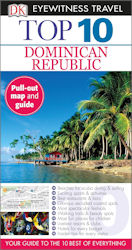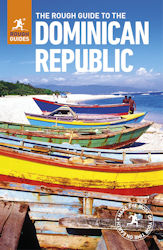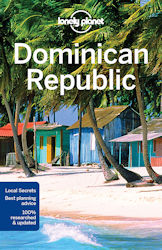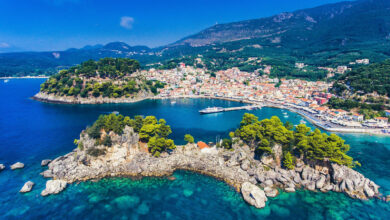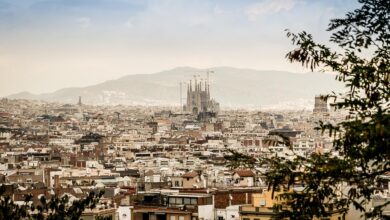The Dominican Republic is a Caribbean nation located on the island of Hispaniola, which it shares with Haiti. Known for its beautiful beaches, vibrant culture, and rich history, the Dominican Republic is a popular tourist destination.
The Dominican Republic is situated on the eastern two-thirds of Hispaniola, with a total land area of 48,442 square kilometres (18,704 square miles). The country has a diverse landscape, including mountain ranges, rainforests, and deserts. The highest point in the Dominican Republic is Pico Duarte, which stands at 3,087 meters (10,128 feet) above sea level.
The country’s climate is tropical, with temperatures ranging from 28-34°C (82-93°F) during the day and 20-25°C (68-77°F) at night. The rainy season runs from May to November, with the rest of the year experiencing mostly sunny and dry weather.
The Dominican Republic has a unique and vibrant culture that reflects its Spanish, African, and indigenous Taino roots. The country’s music, dance, and cuisine are all integral parts of its cultural identity.
Merengue and bachata are two of the most popular musical genres in the Dominican Republic. Merengue is a fast-paced dance music with roots in African rhythms, while bachata is a slower, more romantic style of music with Spanish guitar influences.
Dominican cuisine is known for its flavorful and diverse dishes, including rice and beans, plantains, and seafood. One of the most popular dishes is “la Bandera,” which consists of rice, beans, meat, and salad.
The people of the Dominican Republic are known for their warm and friendly nature. The population is predominantly of mixed African and European descent, with a small percentage of indigenous Taino people.
The Dominican Republic has a rich and complex history that spans centuries. The island of Hispaniola was first inhabited by the Taino people, who were later enslaved and nearly wiped out by Spanish conquistadors in the 16th century.
The country gained independence from Spain in 1821 and became part of a larger entity called Gran Colombia. However, in 1844, the Dominican Republic declared its independence and established its own government.
The country has experienced political instability and economic challenges throughout its history, including a period of dictatorship under Rafael Trujillo from 1930-1961. Since then, the country has made significant progress towards democracy and economic growth.
Tourism is a major industry in the Dominican Republic, accounting for around 8% of the country’s GDP. The country’s beautiful beaches, clear waters, and warm climate make it a popular destination for travellers from around the world.
Punta Cana, located on the eastern coast of the country, is one of the most popular tourist destinations in the Dominican Republic. The area is known for its all-inclusive resorts, white sand beaches, and clear blue waters.
Other popular destinations in the Dominican Republic include Santo Domingo, the country’s capital and largest city, and Puerto Plata, which offers a more laid-back atmosphere with beautiful beaches and mountain views.
The Dominican Republic is a beautiful and culturally rich country with a complex history and a bright future. Its warm and friendly people, diverse landscape, and vibrant culture make it a must-visit destination for anyone looking to experience the best of the Caribbean.
Best Time to Visit The Dominican Republic
The Dominican Republic is a popular tourist destination with a tropical climate that typically experiences warm temperatures and sunshine throughout the year. However, the best time to visit the country largely depends on your preferences and the activities you plan to do during your trip.
The peak tourist season in the Dominican Republic is from December to February, which is the dry season and is considered the best time to visit for those who enjoy sunny days and comfortable temperatures. During this time, temperatures range from the mid-20s to the low-30s Celsius (70s-80s Fahrenheit), and there is very little rainfall. The peak season is also when the country is the most crowded, and hotel rates and flights are typically more expensive.
If you prefer to avoid the crowds and save some money, the shoulder seasons of April to June and September to November are good options. During these months, the weather is still warm and sunny, with occasional rain showers. Hotel rates and flights may be more affordable, and you can enjoy a more laid-back atmosphere with fewer tourists.
July and August are considered the low season in the Dominican Republic due to the heat and humidity, but it can still be a good time to visit if you enjoy water sports and beach activities. Temperatures during this time can reach the high 30s Celsius (90s Fahrenheit), and there may be occasional rain showers and thunderstorms.
Overall, the best time to visit the Dominican Republic largely depends on your preferences and the activities you plan to do during your trip. If you enjoy sunny days and comfortable temperatures, December to February is the best time to visit. For those looking for a more affordable and less crowded trip, the shoulder seasons of April to June and September to November are good options.
Average Temperature in The Dominican Republic
The average temperature in the Dominican Republic varies depending on the season and location within the country. Generally, the country has a tropical climate with high temperatures and humidity throughout the year.
In coastal areas, such as Punta Cana and Santo Domingo, temperatures typically range from the mid-20s to low-30s Celsius (70s-80s Fahrenheit) during the day, with nighttime temperatures ranging from the high teens to low 20s Celsius (60s Fahrenheit). However, in the interior regions of the country, such as Jarabacoa and Constanza, temperatures can be cooler due to the higher elevation.
The average temperature in the Dominican Republic varies slightly throughout the year. December to February is considered the peak tourist season and has the most comfortable temperatures, with average daytime temperatures ranging from the mid-20s to low-30s Celsius (70s-80s Fahrenheit). From March to May, temperatures start to rise, with average daytime temperatures ranging from the high 20s to the low 30s Celsius (80s-90s Fahrenheit). June to August is typically the hottest time of year, with daytime temperatures averaging in the high 30s Celsius (90s Fahrenheit). From September to November, temperatures begin to cool down slightly, with average daytime temperatures ranging from the high 20s to the low 30s Celsius (80s-90s Fahrenheit).
Overall, the Dominican Republic has warm and humid temperatures throughout the year, making it a popular destination for those seeking a tropical climate.
Credits
Photo: Dominican Republic. Photo by: Antonella Vilardo on Unsplash

